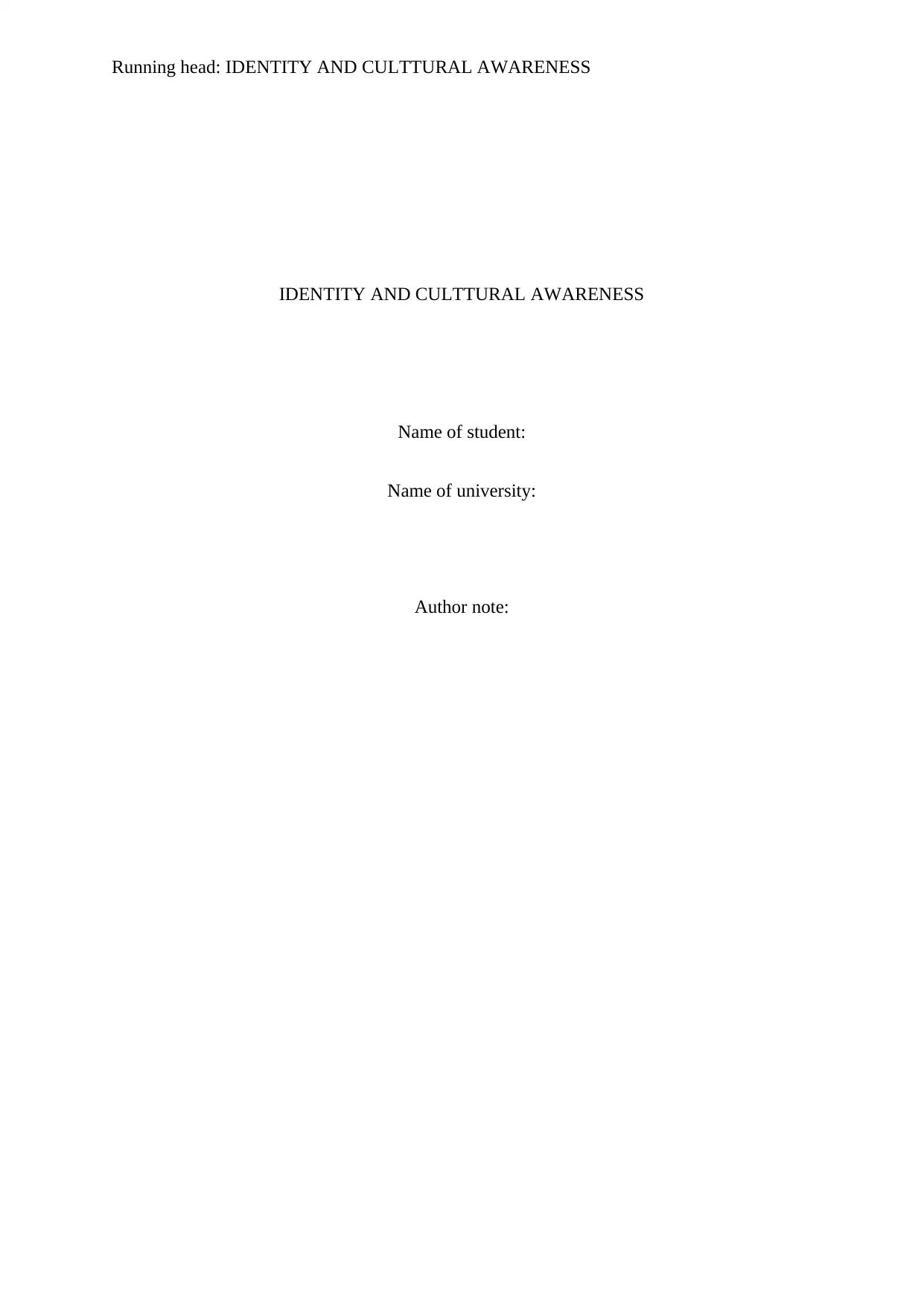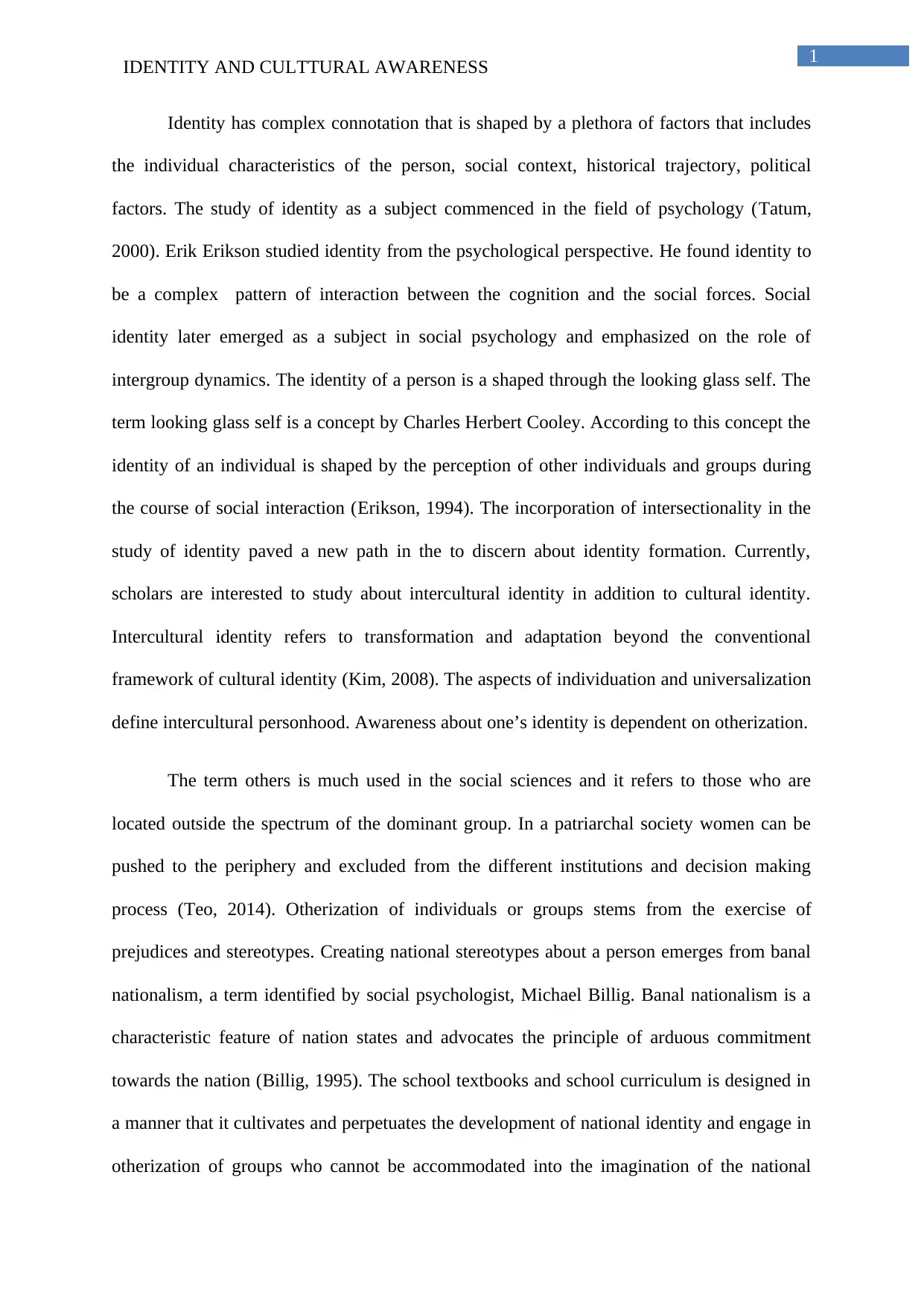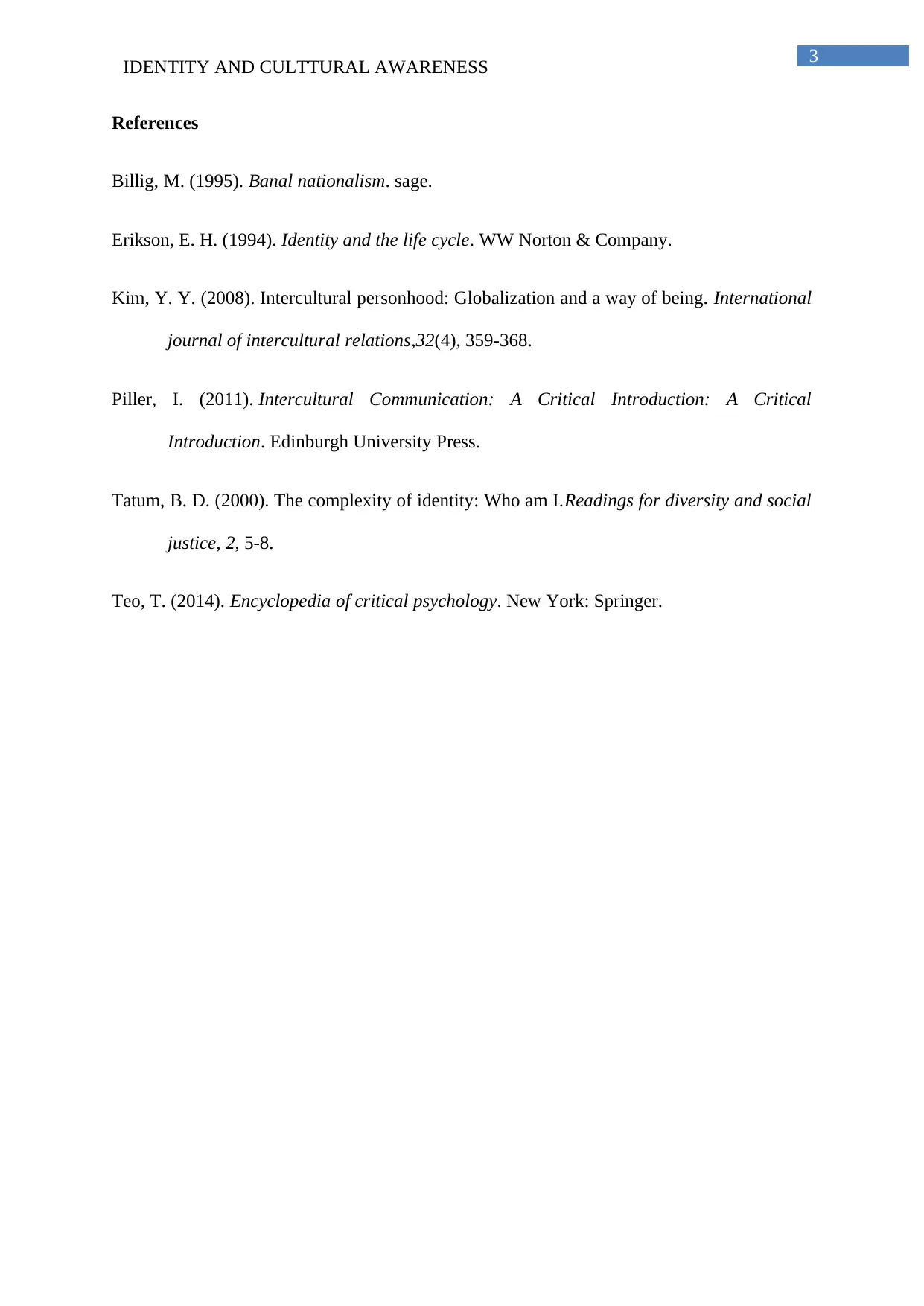COMR2010 - Cultural Diversity: Reflective Journal on Identity
VerifiedAdded on 2023/06/13
|4
|736
|76
Journal and Reflective Writing
AI Summary
This reflective journal explores the complex interplay between identity and cultural awareness, drawing on concepts such as the looking-glass self, otherization, and intersectionality. It discusses how individual identity is shaped by social context, historical factors, and power dynamics, emphasizing the role of intergroup relations and the impact of societal stereotypes. The journal also touches on the tensions between identity and intersectionality, highlighting how privileged and oppressed identities are determined by social positioning. References to scholars like Erik Erikson, Charles Herbert Cooley, Michael Billig, and Beverly Tatum provide a theoretical grounding for the reflections. The document aims to fulfill requirements for COMR2010, focusing on cultural diversity and intercultural competence, and is available on Desklib, a platform providing study tools for students.
1 out of 4











![[object Object]](/_next/static/media/star-bottom.7253800d.svg)